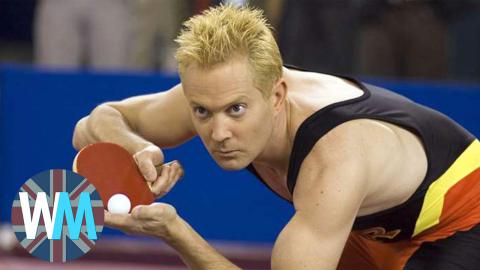Top 10 Things You Didn't Know the UK Invented

Let's make history. Welcome to WatchMojo UK and today we'll be counting down our picks for the top 10 things you didn't know were invented in Britain!
For this list, we've picked out some of Blighty's best inventions, and ranked the ones which we think are often overlooked.
Special thanks to our user WordToTheWes for submitting the idea on our interactive suggestion tool: WatchMojo.comsuggest
#10: Chocolate Bar
Before Mars Bars, Dairy Milk, Twix, Twirl or Toffee Crisp came Fry’s Chocolate Cream. Predated only by bittersweet treats, including an innovative 1847 effort by Joseph Fry himself, Chocolate Cream was the first bar to be widely distributed, hitting shelves in 1866. Dairy-free with a fondant centre, the idea quickly caught on, with a certain John Cadbury starting mass production soon afterwards. Then came Henri Nestle, Rudolf Lindt and Milton S. Hershey.
#9: Postage Stamp
Here’s one to write home about. The heady history of the postage stamp boasts a series of major players, with most of the significant changes happening in London. Sir Rowland Hill is widely credited with creating the self-adhesive item we take for granted today, as well as a regulated cost system, introducing the first stamps, the Penny Black and the Two Pence Blue, in 1840. Both bear an image of Queen Victoria, and both are worth a pretty penny today.
#8: Viagra
Sex is something of a specialist subject in British history. First, the vibrator was conceived by an 1880s physician who sought a cure for female hysteria, and then male impotence was solved largely by accident. The effects of Sildenafil (or Viagra) were discovered in 1991, when a group of Kent-based Pfizer employees were researching a proposed new treatment for angina. But, rather than righting the heart, the product precipitated other, noticeable changes. The findings were quickly turned into a pill, sparing bedroom blushes worldwide.
#7: Table Tennis
In truth, the UK is responsible for, or it had a major hand in, the development of countless sports. Badminton; that was us. Cricket; obviously. Rugby, football, snooker and bowls; all at least partly British. Squash was invented at Harrow; netball at Hampstead college; and modern golf is Scottish. But we’ve singled out table tennis. An Olympic sport since 1988, it began in Victorian England as a popular parlour game. Using improvised nets and paddles, players played over a dining table – often serving golf balls to their opponent.
#6: Flushing Toilet
While there is evidence that early civilisations used water to sanitise toilets, it wasn’t until Tudor England that a recognisable flush system emerged. Sir John Harrington led the way, installing a basic model for Elizabeth I at Richmond Palace. But it was almost 200 years before this throne became a household convenience. South Yorkshire’s Thomas Crapper perfected the U-bend in 1880. At the Great Exhibition, in 1851, purpose-built WCs were all the rage.
#5: Guillotine
Though best known for cutting through French history, this deadly device was actually a British idea. Beheading was a popular way of executing criminals in the Middle Ages, but all that wielding of swords soon got tiresome. While the guillotine was named after a French doctor, early versions are recorded as far back as the 1200s, in northern England and Scotland. The Halifax Gibbet featured a crude axe-head on a wooden board, while legend says the Scottish Maiden was used to behead an Earl who’d helped install it.
#4: Jet Engine
Historically, war forces ideas. First, the military tank was devised by the Brits for World War One, supposedly inspired by a HG Wells story. Then, came pioneering advances in the skies. The first patent for the jet engine was filed by Sir Frank Whittle, in 1930. But Whittle’s revolutionary ideas weren’t realised until mid-way through the Second World War. By which time a German designer had already adapted his plans. Furthermore, Whittle’s ideas were also shared with America, meaning Britain missed its head-start for their commercial applications, too.
#3: IVF
Introduced in the ‘70s, in vitro fertilisation flipped some of our most fundamental ideas about human biology. Developed for the most part by Patrick Steptoe and Robert G. Edwards, it proved that a successful pregnancy could be initiated outside of the human body. Louise Brown was the world’s first so-called ‘test tube baby’, conceived in a petri dish and born in Oldham. The birth raised ongoing ethical questions, but the procedure has become an increasingly available option – with more than 250,000 IVF babies already born in the UK.
#2: Digital Audio Player
Otherwise known as a portable media player, an MP3 player or most famously, an iPod. You’d be forgiven for thinking that these devices came straight out of Silicon Valley, but no. The gadgets were first thought up by Kane Kramer, a London-based, serial inventor, who designed the IXI in 1979. Similar in size to a cigarette packet, with a small screen and four navigation buttons, the blueprints are uncanny. But Kramer’s patent expired a decade later, leaving others free to act on his ideas. And that, they did.
#1: Motion Pictures
We finish with Britain’s mass of media breakthroughs. Thomas Wedgwood (son of the pottery pioneer) experimented with early attempts at photography, while the Scotsman John Logie Baird was the first to demonstrate TV. But Eadweard Muybridge takes top spot, thanks to his modestly-named 1870s study; “A Horse in Motion”. Aiming to determine how a horse gallops, it featured a series of silhouettes, viewed through another of Eaweard’s inventions, a zoopraxiscope. That was an early film projector, and the study was a precursor for motion pictures, and the movie industry.

 0
0
 0
0
 report
report
 0
0
 0
0
 report
report
 0
0
 0
0
 report
report
 0
0
 0
0
 report
report
 0
0
 0
0
 report
report

